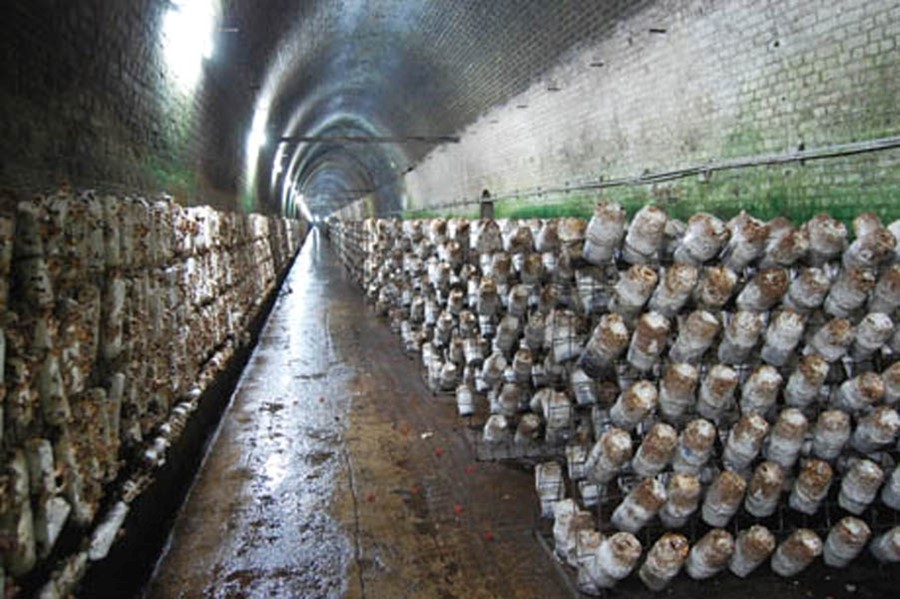A favourite on AnOther's Reader, Edible Geography, by LA-based Nicola Twilley, is a blog exploring cultural trends in food, while her associated Foodprint Project investigates the relationships between urban cities and food. Twilley’s background is
A favourite on AnOther's Reader, Edible Geography, by LA-based Nicola Twilley, is a blog exploring cultural trends in food, while her associated Foodprint Project investigates the relationships between urban cities and food. Twilley’s background is in the museum and non-profit world and, spurred by her passion for food, along with her social consciousness, she’s been running her blog Edible Geography, since summer 2009. Edible Geography is enjoying a steady upward curve of visitors, currently receiving around 22,000 a month, with several thousand RSS and email subscribers on top of that.
What do you mean by the phrase “Edible Geography”?
Edible Geography tries to do pretty much what is says on the label — look at the spatial processes and human ecology of food, past, present, and future. I use food as an excuse to write about all kinds of otherwise unrelated issues that interest me: cities, sensory design, counterfeiting, archaeological reconstruction, sewer diving... the list is endless. But behind each post about topics as diverse as cow tunnels or cupcake gentrification lies the basic idea that food both shapes and is shaped by these other systems it interacts with, so it becomes a lens to understand landscape and culture, as well as imagine alternative futures.
What has been your most popular post?
A post entitled Archaeo-alcohology. It was also one of the posts that I spent the least amount of time writing. There's a lesson there somewhere.
Explain a little about the Foodprint Project you’re working on?
The Foodprint Project is an exploration of the relationship between food and cities. I co-founded it with Sarah Rich at the start of 2010, and we've organized three events in New York City, Toronto, and Denver, with Los Angeles next in early 2011. We bring together people whose work touches on food in some way, but who all come at it from very different perspectives – from architects to a First Nations fisherman – to talk about how food shapes the city and vice versa.
What are the differences between that project and Edible Geography?
The Foodprint Project obviously comes out of the same set of interests that inform my writing on Edible Geography, but it gives me the chance to collaborate with a good friend whose insights I benefit from, and to bring different people, whose work I admire, together in the same room for a conversation. I flatter myself that my writing might inspire people, but the energy and connections of a live event really do make a difference.
Have you noticed any trends in the relationship between food and cities?
This is a book topic, not an interview question – and on that note, I recommend that everyone read Hungry City, by Carolyn Steel. It's a well-written and easily readable book that nonetheless is totally packed with stories that change the way you understand both cities and food, and the relationship between the two.
Has running this blog highlighted any interesting nuances about the way people in different parts of the world approach food?
Absolutely. For example, Natalie Jeremijenko's cross-species dining adventures are literally mind-expanding. You begin to see your own place in the food web in a totally different way.
One of the major trends I’m noticing on your blog and elsewhere is the growing popularity of allotments in inner-city areas. What do you think is driving this? And what are some of the best examples of these that you have seen?
Urban agriculture is definitely resurgent right now. It's an important way to build a community, boost fruit and vegetable consumption, and connect people to their food and their environment. I'm most interested in a project like Joseph Grima and Jeffrey Johnson's Landgrab City, which argues that since today's city could never grow all of its own food (particularly not grains and animal protein), and are projected to continue to grow, we should instead look at ways to connect them to their agricultural hinterland, so that the two have a tangible, mutually-sustainable relationship, rather than the out-of-sight, exploitative model that we see today.
What would you say are the most important issues that you deal with, that are perhaps not reported in other media outlets?
The most important thing I do, I think, is take a transdisciplinary look at food. Food and food systems are so important for environmentalists, architects, designers, urban planners, economists, anthropologists, historians, policy-makers, public health officials, development workers... I would like everyone to realize that food is much more than something to eat.
Text by Laura Havlin
